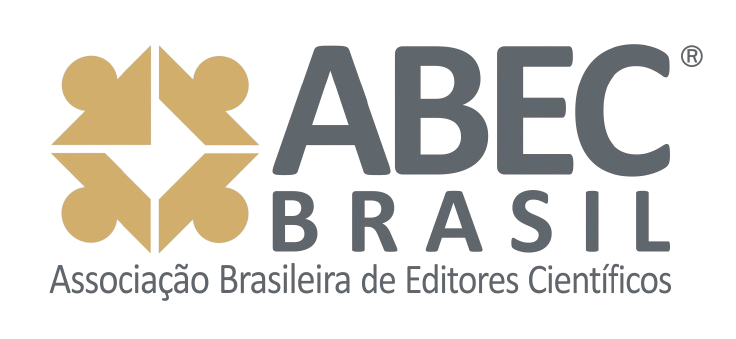Notas críticas acerca das Estruturas Organizacionais Competitivas
DOI:
https://doi.org/10.24883/IberoamericanIC.v7i1.202Keywords:
Estrutura organizacional competitiva, planejamento de marketing, estratégiasAbstract
O presente artigo propõe-se a analisar e estudar o planejamento de marketing no contexto de estrutura organizacionais. O trabalho foi estruturado sob a modalidade de ensaio, e compõe-se de uma revisão do referencial teórico, mediante uma análise conceitual crítica de alguns aspectos pertinentes ao tema. Foram tratadas questões em torno da diferença entre os diversos níveis estratégicos, como a formulação de estratégias corporativas, competitivas e funcionais, além de situar as atividades de planejamento de marketing dentro da hierarquização estrutural das empresas. Por fim, é realizada uma reflexão e levantamento de questões adjacentes ao planejamento de marketing, estratégias e estruturas organizacionais.Downloads
References
AAKER, D. A.; MCLOUGHLIN, D. Strategic Market Management: global Perspectives. [s.l.] John Wiley & Sons, 2010. v. 8
ANTONIO, M.; CASTRO, S. DE; TOLEDO, L. A. As funcionalidades e usos das estratégias competitivas genéricas no âmbito da indústria açúcar : um estudo de caso. FACEF PESQUISA, v. 11, n. 2, p. 160–175, 2008.
BRITO, C. P.; TOLEDO, G. L.; TOLEDO, L. A. Considerações sobre o conceito de marketing - teoria e prática gerencial. revista organização & sociedade, v. 50, n. jul-set, p. 519–543, 2009. DOI: https://doi.org/10.1590/S1984-92302009000300007
BROCHADO, A. O.; MARTINS, F. V. Market Segmentation Methodology: segmentation basis and classification methodsReview of Business Management, 27 jun. 2008. Disponível em: <http://rbgn.fecap.br/RBGN/article/view/174>. Acesso em: 12 ago. 2015 DOI: https://doi.org/10.7819/rbgn.v10i27.174
BROWN, S. W. et al. Marketing Renaissance: Opportunities and Imperatives for Improving Marketing Thought, Practice, and Infrastructure. Journal of Marketing, v. 69, n. 4, p. 1–25, 2005. DOI: https://doi.org/10.1509/jmkg.2005.69.4.1
CALDEIRA, A. et al. Estratégias emergentes e deliberadas : o processo de formação de estratégias sob o prisma do método do estudo de caso. Revista Eletrônica Sistemas & Gestão, v. 4, n. 3, p. 221–237, 2010.
CAMPOMAR, M. C. Revisando um modelo de plano de marketing. Revista Marketing, v. 17, p. 44–47, 1984.
CAMPOMAR, M. C.; MOTTA, K. D. O Sistema De Informações No Planejamento De Marketing: Em Busca De Vantagem Competitiva. Revista de Gestão da Tecnologia e Sistemas de Informação, v. 4, n. 1, p. 23–46, 2007.
DEMO, P. Metodologia Cientifica Em Ciencias Sociais. [s.l.] Atlas, 1995.
DOOLE, I.; LOWE, R. International Marketing Strategy: Analysis, Development and Implementation. [s.l.] Cengage Learning EMEA, 2008.
ESPINOSA, V.; ELSA, A.; PINEDA, G. The application of the development of the corporate innovation like essential element in the construction of the competitive advantage in the managerial environment. [s.l.] Administración de Empresas, 2015.
FIFIELD, P. Marketing Strategy. 3rd Editio ed. [s.l.] Routledge, 2012. DOI: https://doi.org/10.4324/9780080511139
GREINER, L. E. Evolution and revolution as organizations grow: A company’s past has clues for management that are critical to future success. Family Business Review, v. 10, n. 4, p. 397–409, 1997. DOI: https://doi.org/10.1111/j.1741-6248.1997.00397.x
________, L. E. Evolution and revolution as organizations grow. 1972. Harvard business review, v. 76, n. 3, 1998.
GUMMESSON, E. Qualitative Methods in Management Research. [s.l: s.n.].
_______, E. The theory/practice gap in B2B marketing: reflections and search for solutions. Journal of Business & Industrial Marketing, v. 29, n. 7/8, p. 7, 2014a. DOI: https://doi.org/10.1108/JBIM-10-2013-0222
_______, E. Commentary on “The role of innovation in driving the economy: Lessons from the global financial crisis”Journal of Business Research, 2014b.
_______, E.; KUUSELA, H.; NÄRVÄNEN, E. Reinventing marketing strategy by recasting supplier/customer roles. Journal of Service Management, v. 25, p. 228–240, 2014. DOI: https://doi.org/10.1108/JOSM-01-2014-0031
HAX, A. C.; MAJLUF, N. S. The Concept of Strategy and the Strategy Formation Process. Interfaces, v. 18, n. 3, p. 99–109, 1988. DOI: https://doi.org/10.1287/inte.18.3.99
HAX, A. C.; MAJLUF, N. S. The strategy concept and process, Prentice Hall. Upper Saddle River, p. 118–127, 1996.
HOFACKER, C. F. et al. Gamification and Mobile Marketing Effectiveness. Journal of Interactive Marketing, v. 34, p. 25–36, 2016. DOI: https://doi.org/10.1016/j.intmar.2016.03.001
HOOLEY, G. J.; PIERCY, N. F.; NICOULAUD, B. Marketing Strategy and Competitive Positioning 4th Edition. [s.l.] Pearson/Prentice Hall, 2011.
HOOLEY, G. J.; SAUNDERS, J. A.; PIERCY, N. F. Estratégia de marketing e posicionamento competitivo. Brasil: Prentice Hall, 2001.
KASSALIS, I. Hax, C. A.; Majluf, N. S : Industrial Clusters: A Coeffi cient Factor for Integrated Development. Intelektinė ekonomika, n. 5 (2, p. 212–223, 2011.
KELLEY, W. T. Marketing Intelligence for Top Management. Journal of Marketing, v. 29, n. 4, p. 19–24, 1965. DOI: https://doi.org/10.1177/002224296502900405
KOTLER, P.; AMSTRONG, G. Fundamentos de Marketing. São Paulo: Prentice Hall, 2008.
_______, P.; KELLER, K. Marketing management: Analysis, planning, and control. Organization, 2009.
LAKATOS, E. M.; MARCONI, M. D. E. A. FUNDAMENTOS DE METODOLOGIA CIENTIFICA. [s.l.] ATLAS, 2008.
LAMBIN, J.-J. Marketing estratégico. [s.l.] McGraw-Hill, 2002.
_______, J.-J. Capitalism and Sustainable Development. 2009.
MARDONES POBLETE, C. A.; GÁRATE SEPÚLVEDA, C. E. S. Elementos de la estrategia de marketing y su efecto sobre la participación de mercado en la industria chilena. Elements of marketing strategy and its effect on market share in chilean industry (English), v. 61, p. 243–265, 2016. DOI: https://doi.org/10.1016/j.cya.2015.12.003
MILENA, C. G. A.; PALACIOS, A. L. G. La inteligencia de mercado: una estrategia hacia la competitividad. Revista Ensayos: Revista de los estudiantes de Administración de Empresas, v. 6, n. 6, 13 nov. 2013.
MINTZBERG. Safari de Estratégia. [s.l: s.n.]. v. XXXIII
_______, H. Managing on the edges. International Journal of Public Sector Management, v. 10, n. No 3, p. 131–53, 2015. DOI: https://doi.org/10.1108/09513559710166020
MORAES, C. A. DE; TOLEDO, L. A.; GARBER, M. F. Segmentación del mercado empresarial: un estudio del Sector brasileño de aluminio. Revista Inteligência Competitiva, v. 2, n. abr-jun, p. 91–119, 2016. DOI: https://doi.org/10.24883/IberoamericanIC.v6i2.157
PORTER, M. Michael Porter on Strategy. Leadership Excellence, v. 22, n. 6, p. 14, 2005.
RAMPAZZO, L. Metodologia científica. [s.l.] Edições Loyola, 2005.
SAME, S. Marketing Theory: Experience Marketing and Experiential Marketing. 7th International Scientific Conference “Business and Management 2012” May 10-11, 2012, Vilnius, LITHUANIA, p. 480–487, 2012. DOI: https://doi.org/10.3846/bm.2012.063
SCHNAARS, S. P. Marketing Strategy. [s.l.] Simon and Schuster, 1998.
SHATREVICH, V. Industrial Structures as Competitive Factor in Organization Development. Procedia - Social and Behavioral Sciences, v. 110, p. 871–878, 2014. DOI: https://doi.org/10.1016/j.sbspro.2013.12.932
SHIRAISHI, G. DE F.; TOLEDO, L. A. Organizational structures within the scope of strategic marketing planning: a discursive study. Faces, v. 9, n. 2, p. 125–141, 2010.
TOLEDO, G. L. Relações públicas e marketing: um conceito tridimensional. EN-ANPAD, v. 18, p. p.145–15, 1994.
TOLEDO, G. L.; MORETTI, S. L. DO A. Valor para o Cliente e Valor do Cliente: Conceitos e Implicações para o Processo de Marketing. Desenvolvimento em Questão, v. 14, n. 35, p. 400, 23 jun. 2016. DOI: https://doi.org/10.21527/2237-6453.2016.35.400-419
TOLEDO, L. A. Marketing planning and organization structures. Revista Gestão Industrial, v. 7, n. 2, p. 172–186, 2011. DOI: https://doi.org/10.3895/S1808-04482011000200009
_______, L. A. et al. Structure of Marketing Planning: A Reflective Analysis. Future Studies Research Journal, v. 3, n. 2, p. 48–73, 2014.
_______, L. A.; PERROTTA, K.; ALMEIDA, L. DE. Aspectos reflexivos do plano de marketing no âmbito das atividades de marketing. eGesta, v. 3, n. ABR-JUN, p. 74–100, 2007.
VALDÉS, J. Á. Marketing estratégico e estratégia competitiva de empresas turísticas. [s.l.] Universidade de São Paulo, 2003.
VARADARAJAN, P. R.; MENON, A. Cause-related marketing: A coalignment of marketing strategy and corporate philanthropy. Journal of Marketing, v. 52, n. 3, p. 58–74, 1988. DOI: https://doi.org/10.1177/002224298805200306
VASCONCELLOS, E.; HEMSLEY, J. R. Estruturas Organizacionais: Estruturas Tradicionais, Estruturas para Inovação, Estrutura Matricial. 4 ed ed. São Paulo: [s.n.].
VÁSQUEZ-RIZO, F.-E.; GABALÁN-COELLO, J. Información y ventaja competitiva. Coexistencia exitosa en las organizaciones de vanguardia. El Profesional de la Información, v. 24, n. 2, p. 149, 11 mar. 2015. DOI: https://doi.org/10.3145/epi.2015.mar.08
WEBSTER, F. E.; LUSCH, R. F. Elevating marketing: Marketing is dead! Long live marketing! Journal of the Academy of Marketing Science, v. 41, n. 4, p. 389–399, 2013. DOI: https://doi.org/10.1007/s11747-013-0331-z
WEBSTER, F.; MALTER, A.; GANESAN, S. The Decline and Dispersion of Marketing Competence. Mit Sloan Management Review, v. 46, n. 4, p. 35–43, 2005.
Downloads
Published
How to Cite
Issue
Section
License
Authors who publish with this journal agree to the following terms:
1. Authors who publish in this journal agree to the following terms: the author(s) authorize(s) the publication of the text in the journal;
2. The author(s) ensure(s) that the contribution is original and unpublished and that it is not in the process of evaluation by another journal;
3. The journal is not responsible for the views, ideas and concepts presented in articles, and these are the sole responsibility of the author(s);
4. The publishers reserve the right to make textual adjustments and adapt texts to meet with publication standards.
5. Authors retain copyright and grant the journal the right to first publication, with the work simultaneously licensed under the Creative Commons Atribuição NãoComercial 4.0 internacional, which allows the work to be shared with recognized authorship and initial publication in this journal.
6. Authors are allowed to assume additional contracts separately, for non-exclusive distribution of the version of the work published in this journal (e.g. publish in institutional repository or as a book chapter), with recognition of authorship and initial publication in this journal.
7. Authors are allowed and are encouraged to publish and distribute their work online (e.g. in institutional repositories or on a personal web page) at any point before or during the editorial process, as this can generate positive effects, as well as increase the impact and citations of the published work (see the effect of Free Access) at http://opcit.eprints.org/oacitation-biblio.html
• 8. Authors are able to use ORCID is a system of identification for authors. An ORCID identifier is unique to an individual and acts as a persistent digital identifier to ensure that authors (particularly those with relatively common names) can be distinguished and their work properly attributed.













